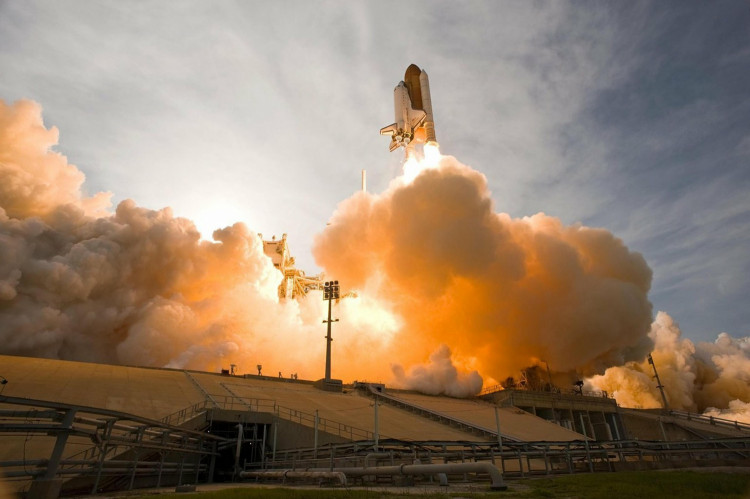Russian space engineers have given the green light for the design of the country's most advanced spacecraft since the global space race in the 1960's.
At 246 feet in length, 10 individual gigantic thrusters will power the new Yenisei rocket in five stages.
In the blueprint, the rocket, named after a body of water in central Russia, could slingshot cosmonauts to very far distances in space, giving Russia more capability to carry out missions to the Moon.
With the Yenisei rocket, Russia is in a good spot to start competing with the United States in a new round of space exploration.
The concept behind Russia's latest space endeavor is to design a space vehicle that can travel at least 250,000 miles of manned spacecraft to the Moon or to a space station orbiting it.
Additionally, the same rocket could carry tremendous amount of weight, like bulky satellites weighing 80 tons or more, and position them around the Earth's orbit.
However, the new rockets by Russia could still need a lot of upgrades when it comes down to lifting heavy loads.
The Proton rocket, currently the most powerful in Russia's inventory, can only carry 25 tons to the low areas of Earth's orbit.
In an interview with The Daily Beast, Pavel Luzin, a space expert at Russia's Perm Univerity, said the country needs the Yenisei rocket to continue its "cooperation and bargaining" with the Americans in space technology.
Roscosmos officially unveiled the Yenisei system in 2018, after several years of research. Roscosmos director Dmitry Rogozin signed off on the Yenisei's design in late December last year.
Rogozin tapped his deputy, Alexander Lopatin, to oversee the continued development of Yenisei, with the objective of sending the rocket to space for the first time in 2028.
In the United States, NASA is taking aging Space Shuttle engines and adding four parts of them into a new rocket frame for its latest Space Launch System.
The SLS is capable of carrying 130 tons of load to Earth's low orbit or fly an Orion capsule and its crew all the way to a lunar space station that the Americans are trying to construct.
The SLS is scheduled to blast off this year on its first test flight. If successful, it will join NASA's efforts to bring astronauts back to the Moon in 2024.
But the new moon launch of the US could be far from happening. Analysts say it could cost NASA around $30 billion in addition to the nearly $20 billion that the House of Representatives usually gives NASA annually.
Congress approved only $600 million from the $1 billion downpayment NASA needed for its space mission for 2020.






